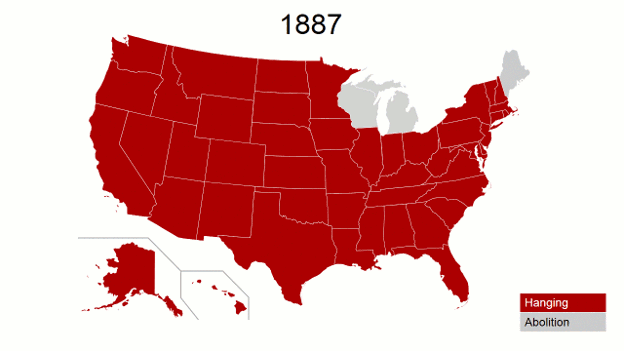Lane Florsheim details the evolution of executions in the US:
In 1790, Thomas Bird became the first person to be executed under the United States Constitution. Bird was convicted of murder and piracy, and the total cost of his hanging was five dollars and fifty cents (for the construction of a gallows and a coffin). Since then, the U.S. state and federal governments have executed thousands of people by hanging, firing squad, electric chair, lethal gas, and lethal injection. The map [seen above] illustrates the progression of death penalty execution methods by state since the beginning in the late nineteenth century.
The Supreme Court effectively put executions on hiatus in its 1972 Furman v. Georgia decision, but states immediately began working around the ruling and the Court reinstated the death penalty in 1976’s Gregg v. Georgia decision. By 2009, all death-penalty states had made lethal injection the sole or primary execution method for death row inmates, despite problems with the method that have been evident since the 1950s. Now, the death penalty is transforming once again, due to a shortage in the drug used in the three-drug protocol to paralyze the inmate during his execution. As a result, states have resorted to hunting for a replacement in unusual places, such as domestic compounding pharmacies. Some have changed their protocols to use just one drug, or tried to replace the missing drug with new drugs. Others have put executions on hold. In states such as Louisiana, Tennessee, and Wyoming, there’s even been talk of reintroducing the electric chair. This has led to a spate of ethical problems and legal challenges.
Previous Dish on the shortage of lethal-injection drugs here.
